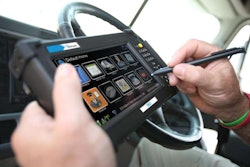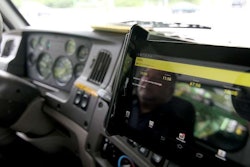1. ELDs force dispatchers and load planners to be involved in the details of driver schedules. They are just as, if not more, responsible for violations than drivers since they too have real-time visibility to hours.
2. DOT inspectors are far less likely to inspect a driver’s logbooks with a decal on the truck stating the vehicle is equipped with a compliant ELD device. When they do inspect e-logs, some officers will call the fleet to ask for a company code to view the logs online through the vendor’s website.
3. Have measures in place when ELD devices go down, because they will. Provide drivers with an instruction sheet for who to contact to receive a fax, an e-mail or login credentials to a website where drivers can retrieve the last 7 days of work activity. Also, have drivers carry a paper logbook for backup. Draw a line on the paper grid at the time the electronic unit went down. Don’t back up the paper logbook for the entire day, as that could contradict the electronic record.
4. Customers can be the biggest challenge when implementing ELDs. Besides detention time at docks, some shippers disallow drivers from staying on their property beyond a short time limit. Drivers that hit their 14-hour or 11-hour drive limit while in a shipper’s parking lot could be forced to violate the hours-of-service rules by moving offsite. Carriers believe shippers should be liable in such instances, but currently the law makes no provision that would allow drivers to go a few extra miles to find a “safe harbor” once their time has expired.
5. Use the “miles without hours” report to catch drivers trying to cheat the system, such as going off duty and then turning the system off or disconnecting the power cord. With paper logs it was much easier for drivers to slip into the sleeper berth in North Carolina and mysteriously wake up in Florida.
6. Personal conveyance is a gray area with ELDs, especially for owner operators, so choose a policy and stick to it. The policy should specify when, where and for how long drivers are allowed to use it. For example, if a driver runs out of hours when dropping a trailer at a company terminal or customer location, do you allow the driver to bobtail 5 miles to get home? How about 100 miles?
7. Unforeseen circumstances. Hours-of-service regulations allow drivers to extend on duty time by two hours for unforeseen circumstances like weather. One fleet owner said this is a gray area that can be used sparingly, if necessary, in situations where drivers would otherwise go over their hours-of-service limits. If you do use it, make sure the driver does not move for two hours. “We don’t use it so often,” he said. “We try to avoid that gray area.”











